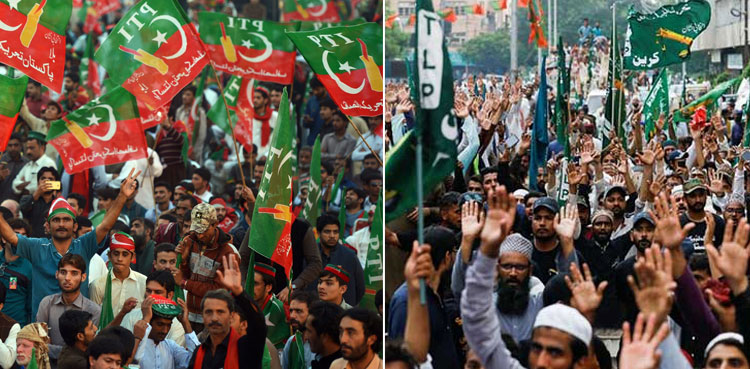By: Rabia Aslam
Pakistan is a multilingual country, with six major languages and more than fifty-nine minor languages. Government, business sector, media, education, and other spheres of power, however, speak English and Urdu. Pakistan’s current constitution (1973) defines Urdu as the national language and English as the official language; the latter was stated as a transitional policy following Bangladesh’s separation. The 1973 Constitution was promulgated with Article 251 stating:
- 1. The National language of Pakistan is Urdu, and arrangements shall be made for its being used for official and other purposes within fifteen years from the commencing day.
- 2. Subject to clause (1), the English language may be used for official purposes until arrangements are made for its replacement by Urdu.
- 3. Without prejudice to the status of the National language, a Provincial Assembly may by law prescribe measure[s] for the teaching, promotion and use of a provincial language in addition to the national language.
It is pertinent here to mention that Muhammad Ali Jinnah addressed the crowd after the inception of Pakistan at Dhaka in 1948 that “The State Language of Pakistan is going to be Urdu and no other language.” This declaration demonstrates how Urdu evolved as a linguistic symbol of national identity, and any association of a non-Urdu language with Pakistan being considered disloyal. However, the capital of the nation was in West Pakistan where Urdu was spoken by a large number of people but not Bengali. This created an imbalance of power between East and West Pakistan. To be honest, language policy is only one facet of the complicated political, social, and economic causes that contributed to disintegration of Pakistan into two parts in1971, but it planted the seeds of discontent in both the East and West Wings.
Pakistan’s language education policy has long paid lip service to the people’s local tongues, but, it has never put this rhetoric into action.
A close look at the present constitution reveals that The Constitution recognizes the urgency to keep English as the official language until “arrangements” are made.
Punjab had the biggest population and overwhelmed Sindh, Balochistan, and Khyber Pukhtoonkhwa, the one-unit policy caused an imbalance of representation. The authors of the constitution also recognized the diversity of vernacular languages and left it up to the provincial assembly to address the issue. With the exception of Sindhi, which has retained its de jure status as a MOI, nearly every province and its spoken language(s) remained officially unaddressed in language-in-education policies, including Balochi and Brahvi in Balochistan, Pashto in KPK, Siraiki and Punjabi in Punjab, among others.
Moreover, with over 60 languages spoken in Pakistan, several ethnic-separatist movements continue to use their languages as a campaign slogan for political autonomy. Throughout Pakistan’s history, these strident language groups have fought Urdu-centric cultural norms, particularly in Sindhi-speaking, Siraiki-speaking, Pashto-speaking, and Balochi-speaking populations. The leaders, as believed by the non-Urdu speaking population, sought to stifle their ethnic identity. These status policy efforts to unite Pakistani citizens under one language have been fraught with politics and conflict.
Another aspect of the policy reflects that Pakistan’s education system perpetuated the divide between English-medium education for the elite and Urdu-medium education for the others, similar to the colonial strategy of not teaching English to all Indians but just a chosen few. Of course, many reasons contribute to the state’s mishandling of education policies and their implementation, including elements other than language-in-education policies. It shows as if, like the colonial era, Pakistan’s national policy does not want to take into account linguistic diversities prevailing in the country. Multilingual language-in-education policies were considered to be tactful for political reasons and strategic governance by the state. For instance, Benazir Bhutto introduced the Balochistan Mother Tongue Use Bill in 1990 which proposed that permitted the use of Balochi, Pashto and Brahivi in public educational institutions exempting the elite English medium educational institutions. However, in 1992, Nawaz Sharif revoked this bill and made this policy optional.
Another policy was using Islam as a counter-ethnicity tool, allowing Pakistanis to be distinguished from Indians. Religious extremism and insurgency emerged as a result of this program, something the elite had not anticipated. Article 31 (2a) in The Principles of Policy of 1973 constitution encouraged the learning of Arabic Language under Z.A Bhutto tenure. The education system was Islamized more thoroughly in Zia ul Haq’s rule in 1979.In 1982 which includes teachings and activities that use Islam to promote jingoistic nationalism.
National Education Policy 2009 explains that ‘’while English is an international language necessary for competition in a globalized world, Urdu is the language that connects people across Pakistan and is a symbol for national cohesion and integration”. With the exception of Urdu, none of Pakistan’s vernacular languages are addressed by name in the NEP 2009. These two apparently contradictory goals–to appear modern while keeping cohesive as a nation–do not sufficiently address the challenges that students and teachers experience in achieving the academic achievement that the government expects. The language policy components of the NEP 2009 appear to be a rhetorical ploy for interested development organizations outside of Pakistan, and could arguably not be implemented in any serious way.
Education became a provincial subject in 2010 as a result of the 18th amendment to the Constitution. The Punjab government issued an executive order that converted some government-run Urdu-medium schools to English-medium institutions. The schools lacked sufficient numbers of teachers to effectively implement this program, and the pupils were not exposed to English outside of school, hence the policy failed. Teachers continued to teach in Urdu and Punjabi, according to the British Council. The ruling was revoked in 2014.
In the last ten years or so, Mother Language Education (MLE), or teaching in one’s mother tongue, has seen extraordinary growth. As a supporter of Pashtun ethnicity, the National Awami Party (ANP), which controlled in KP, allowed the inclusion of Pashto, Hindko, Siraiki, Khowar, and Kohistani as obligatory subjects from classes 1 to 8 in both government and private institutions in the province from 2012 to 2013in the areas where languages were being used.
When looking at the educational landscape in 2021, there is no indication that existing practices will change much. For example, English’s status as a formative medium for the affluent elite appears to be set in stone. This is because, as the following study on the relationship of English-medium schools with the privileged classes reveals, the medium of instruction has a class dimension that is unlikely to change in the near future through the NEP 2021 emphasizes the incorporation of urdu as the medium of instruction in a number of subjects.
With the last few (since 2014) military interventions against the Islamist extremists on the Pak-Afghan border, it may be expected that the pattern for Islamization will decrease. However, the Islamization of textbooks and discourse in the media is guarded not only by the secular parties but also by a huge segment of the media which institutionalized the values promoted by Zia ul Haq.
The British Council also suggested that Pakistan adopt a multilingual education policy in which English would not have a great role to play. However, the British Council’s varied assessments do not deny the possibility of elite youngsters choosing a different medium of teaching than their less fortunate peers.
To conclude, Pakistan’s language education policy has long paid lip service to the people’s local tongues, but it has never put this rhetoric into action. Sindhi, which was studied in the British province of Sindh during the British era, is the sole exception to this general norm, and Sindhi nationalists have never permitted their language to be demoted to the level of other indigenous languages. Pashto is an exception as well, but because it is only taught up to class 5 and only in a few remote places, it is not the primary language of instruction for most students who are native speakers. The efforts of private language activists, with the assistance of foreign organizations, are slowly changing this reality.
While most academics believe that Pakistan’s linguistic diversity is the emblem of diverse and dynamic cultures and communities, they are less willing to acknowledge the role of integrating different varieties in the educational sector. To gain a better understanding of the types of language-in-education policies that may benefit non-elite Pakistani students, more empirical and sociologically insightful research studies that focus on localized and diverse communicative practices in both urban and rural classrooms should be favored and supported. Without a more critical knowledge of the language ideologies that have driven previous policies, it appears presumptuous to establish a clear language policy. Rather, academics must acknowledge the multi-dimensional communicative perspectives of pupils, teachers, and families, and create room in school experiences for these differences. This may imply various language strategies for different regions and cities, but this should not be an alarming sign that Pakistani pupils will no longer identify with a monolingual state.
The writer is an educationist, content writer, and a freelance columnist with nearly more than a decade of experience in the field of education. She is an eloquent commentator on women’s rights, education, peace and interfaith harmony. She can be reached at [email protected]








